Grow Sweet Potatoes at Home – imagine harvesting a bounty of these vibrant, nutritious tubers right from your own backyard! For centuries, sweet potatoes have been a staple in diets around the world, from their origins in Central and South America to becoming a beloved ingredient in Southern cuisine and beyond. Their rich history is intertwined with cultures that have long recognized their incredible health benefits and delicious flavor.
But you don’t need a sprawling farm to enjoy the taste of homegrown sweet potatoes. I’m here to tell you that you can absolutely grow sweet potatoes at home, even if you have limited space! This DIY guide is packed with simple, effective tricks and hacks that will empower you to cultivate your own sweet potato patch, no matter your gardening experience.
In today’s world, where we’re increasingly conscious of where our food comes from, growing your own produce is more appealing than ever. Not only will you have access to fresh, organic sweet potatoes, but you’ll also experience the satisfaction of nurturing something from seed (or slip!) to harvest. Plus, let’s be honest, store-bought sweet potatoes just can’t compare to the flavor of those you’ve grown yourself. So, let’s dive in and discover the secrets to a thriving sweet potato harvest right in your own backyard!
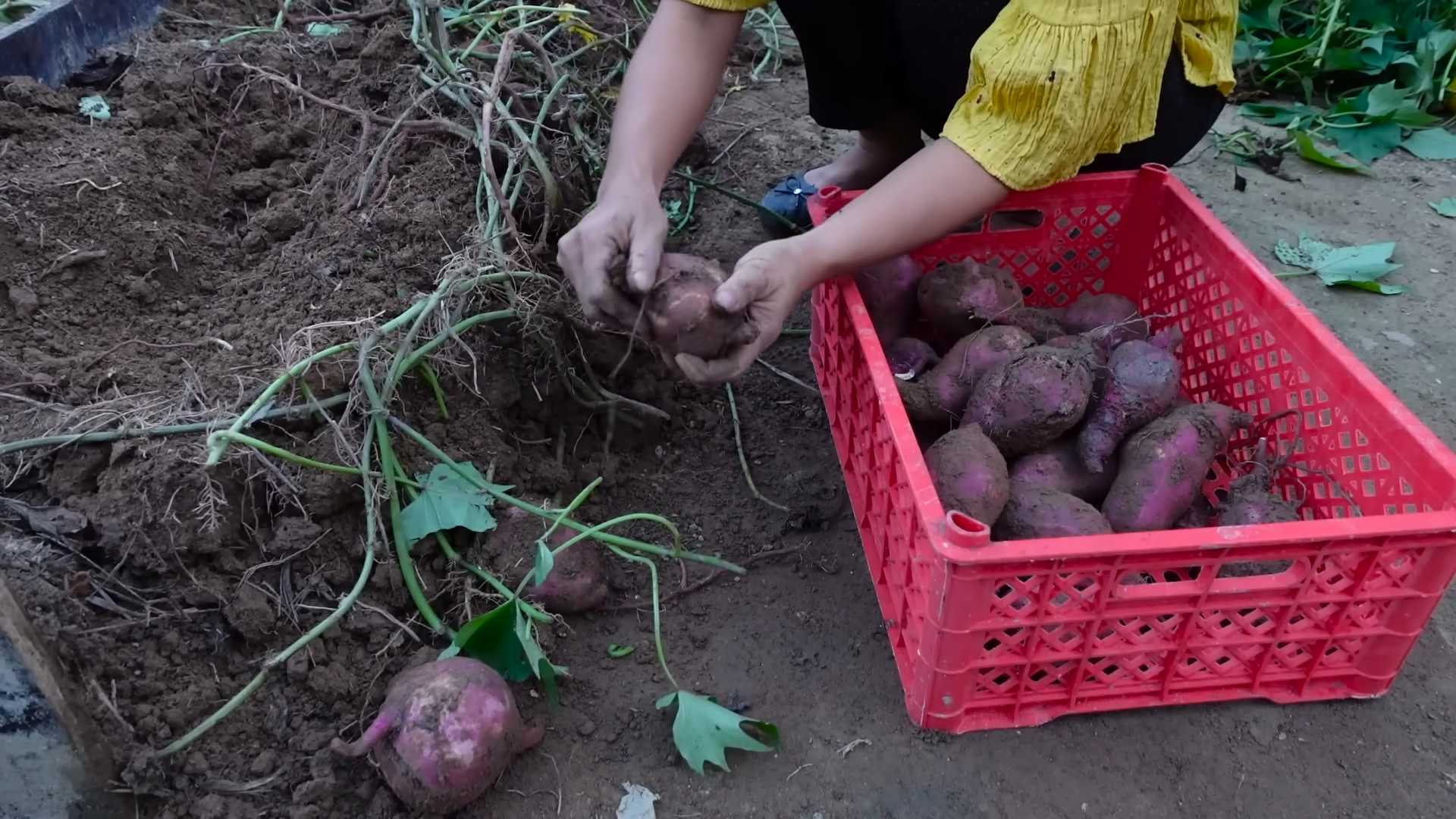
Grow Your Own Sweet Potatoes: A Beginner’s Guide
Hey there, fellow gardening enthusiasts! Ever thought about growing your own sweet potatoes? It’s surprisingly easy and incredibly rewarding. Imagine harvesting those vibrant, orange tubers you nurtured from tiny slips – nothing beats that fresh, homegrown flavor! This guide will walk you through every step, from sprouting your own slips to harvesting a bountiful crop. Let’s get our hands dirty!
Getting Started: Sprouting Your Own Sweet Potato Slips
Sweet potato slips are essentially baby sweet potato plants that sprout from the parent tuber. You can buy them, but it’s much more fun (and economical!) to grow your own.
What you’ll need:
* A healthy sweet potato (organic is best to avoid any growth inhibitors)
* A glass jar or container
* Toothpicks
* Water
Step-by-step instructions:
1. Choose your sweet potato: Select a firm, unblemished sweet potato. Older potatoes that have started to sprout eyes are ideal.
2. Prepare the potato: Thoroughly wash the sweet potato to remove any dirt.
3. Insert toothpicks: Insert 3-4 toothpicks around the middle of the sweet potato, evenly spaced. These will act as supports to suspend the potato in the jar.
4. Fill the jar with water: Fill the jar with enough water so that the bottom third to half of the sweet potato is submerged.
5. Position the potato: Carefully balance the sweet potato on the rim of the jar, using the toothpicks to hold it in place. Make sure the bottom of the potato is in the water.
6. Find a sunny spot: Place the jar in a warm, sunny location. A windowsill is perfect.
7. Maintain the water level: Check the water level daily and add more as needed to keep the bottom of the sweet potato submerged.
8. Wait for sprouts: Be patient! It can take several weeks for sprouts (slips) to emerge from the sweet potato. You’ll start to see small roots growing from the bottom and leafy shoots appearing on top.
9. Encourage growth: Once the slips are about 6-8 inches long, they’re ready to be removed.
10. Harvesting the slips: Gently twist or cut the slips from the sweet potato. It’s best to cut them rather than pull them, to avoid damaging the potato.
11. Rooting the slips: Place the slips in a glass of water, ensuring that the bottom 2-3 inches are submerged. Change the water every day or two. Within a week or so, you should see roots developing.
12. Planting the rooted slips: Once the roots are about an inch long, your slips are ready to be planted in the garden!
Preparing Your Garden Bed
Sweet potatoes need plenty of sunshine and well-drained soil. Preparing your garden bed properly will give them the best possible start.
What you’ll need:
* Garden fork or tiller
* Compost or well-rotted manure
* Optional: Raised beds
Step-by-step instructions:
1. Choose a sunny location: Select a spot in your garden that receives at least 6-8 hours of direct sunlight per day.
2. Prepare the soil: Sweet potatoes prefer loose, well-drained soil. Use a garden fork or tiller to loosen the soil to a depth of at least 12 inches.
3. Amend the soil: Incorporate plenty of compost or well-rotted manure into the soil. This will improve drainage, add nutrients, and help retain moisture.
4. Consider raised beds: Sweet potatoes thrive in raised beds, as they provide excellent drainage and allow the soil to warm up quickly. If you live in an area with heavy clay soil, raised beds are highly recommended.
5. Create mounds or ridges: Sweet potatoes grow best when planted on mounds or ridges. This helps with drainage and allows the tubers to expand easily. Create mounds that are about 8-12 inches high and 12-18 inches wide. Space the mounds about 3-4 feet apart.
Planting Your Sweet Potato Slips
Now for the exciting part – planting your slips!
What you’ll need:
* Your rooted sweet potato slips
* Watering can
* Optional: Mulch (straw, hay, or wood chips)
Step-by-step instructions:
1. Choose the right time: Plant your sweet potato slips after the last frost, when the soil has warmed up to at least 65°F (18°C).
2. Water the soil: Before planting, thoroughly water the soil in the mounds or ridges.
3. Plant the slips: Gently plant the slips into the mounds, spacing them about 12-18 inches apart. Bury the slips up to the first set of leaves.
4. Water thoroughly: Water the newly planted slips thoroughly.
5. Mulch (optional): Apply a layer of mulch around the plants to help retain moisture, suppress weeds, and regulate soil temperature.
6. Protect from pests: Keep an eye out for pests like flea beetles and sweet potato weevils. Use organic pest control methods if necessary.
Caring for Your Sweet Potato Plants
Sweet potatoes are relatively low-maintenance, but they do need some attention to thrive.
What you’ll need:
* Watering can or hose
* Optional: Organic fertilizer
Step-by-step instructions:
1. Water regularly: Water your sweet potato plants regularly, especially during dry periods. Aim to keep the soil consistently moist, but not waterlogged.
2. Fertilize (optional): If your soil is poor, you can fertilize your sweet potato plants with an organic fertilizer. Follow the instructions on the fertilizer package. Avoid using fertilizers that are high in nitrogen, as this can promote leafy growth at the expense of tuber development.
3. Control weeds: Keep the garden bed free of weeds, as they can compete with your sweet potato plants for nutrients and water. Hand-pull weeds regularly or use a hoe to cultivate the soil.
4. Monitor for pests and diseases: Regularly inspect your sweet potato plants for signs of pests or diseases. Common pests include flea beetles, sweet potato weevils, and aphids. Common diseases include fungal infections like stem rot and leaf spot. Treat any problems promptly with organic pest control methods or fungicides.
5. Prune vines (optional): Some gardeners prune the vines of their sweet potato plants to encourage tuber development. However, this is not essential. If you choose to prune, simply trim back the vines that are growing excessively long.
Harvesting Your Sweet Potatoes
The moment you’ve been waiting for! Harvesting your own sweet potatoes is incredibly satisfying.
What you’ll need:
* Garden fork
* Gloves
* Optional: Pruning shears
Step-by-step instructions:
1. Know when to harvest: Sweet potatoes are typically ready to harvest about 90-120 days after planting. The leaves will start to turn yellow and the vines will begin to die back.
2. Choose a dry day: Harvest your sweet potatoes on a dry day to prevent them from rotting during storage.
3. Prepare the vines: A few days before harvesting, use pruning shears to cut the vines back to about 6 inches from the ground. This will make it easier to dig up the tubers.
4. Dig carefully: Use a garden fork to carefully dig around the plants, being careful not to damage the tubers. Insert the fork about 12 inches away from the plant and gently lift the soil.
5. Lift the tubers: Once you’ve loosened the soil, carefully lift the tubers from the ground.
6. Handle with care: Sweet potatoes are delicate and can bruise easily, so handle them with care.
7. Curing your sweet potatoes: Curing is essential for developing the sweet flavor and improving storage life.
Curing and Storing Your Sweet Potatoes
Curing is a crucial step that allows the starches in the sweet potatoes to convert to sugars, enhancing their flavor and extending their storage life.
What you’ll need:
* A warm, humid place (80-85°F/27-29°C and 85-90% humidity)
* Cardboard boxes or crates
Step-by-step instructions:
1. Clean the sweet potatoes: Gently brush off any excess dirt from the sweet potatoes, but don’t wash them.
2. Cure the sweet potatoes: Place the sweet potatoes in a single layer in cardboard boxes or crates.
3. Maintain the right conditions: The ideal curing conditions are a temperature of 80-85°F (27-29
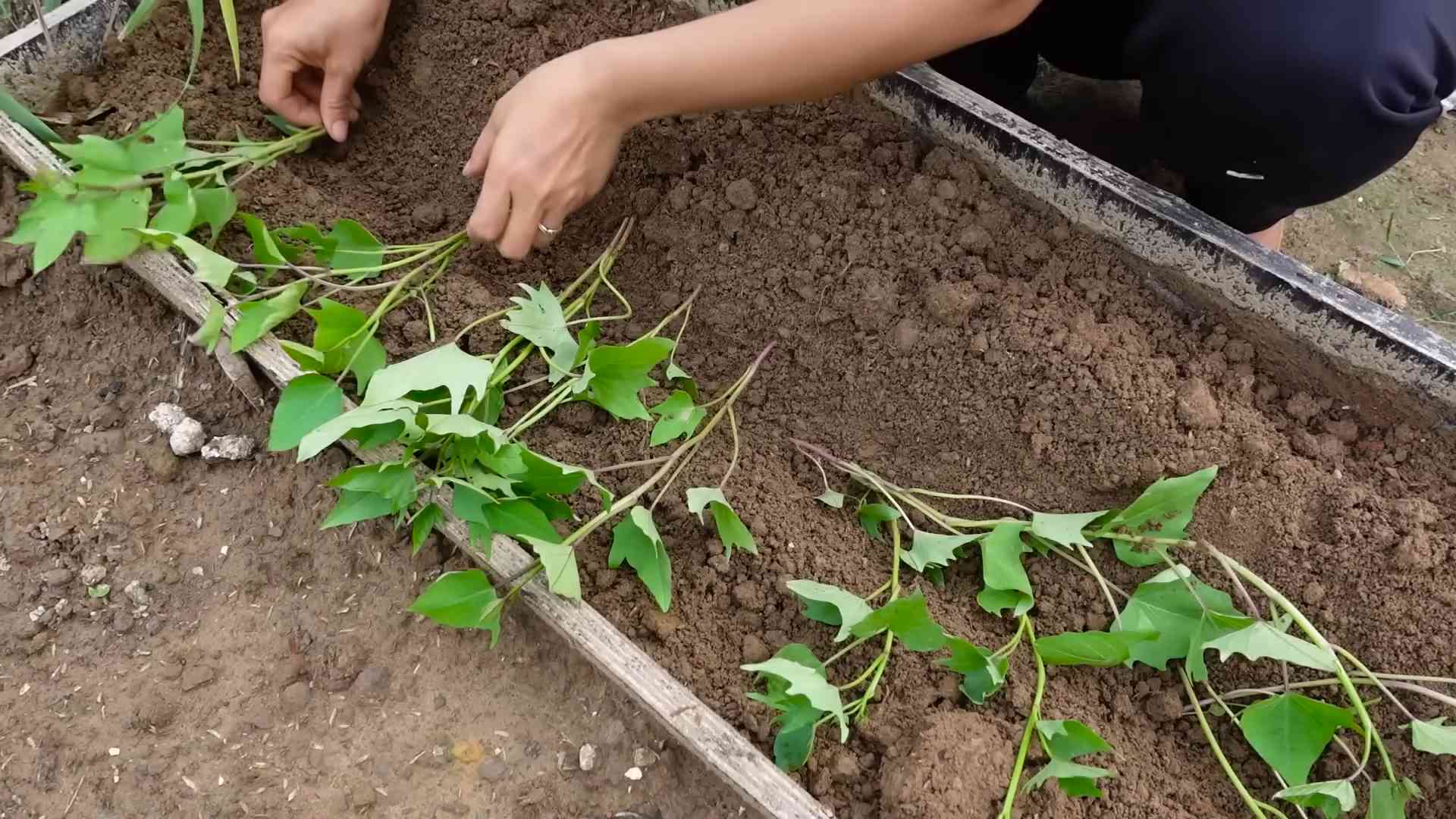
Conclusion
So, there you have it! Growing sweet potatoes at home is not only achievable but also incredibly rewarding. Forget those bland, store-bought sweet potatoes; imagine sinking your teeth into a freshly harvested, vibrant orange sweet potato that you nurtured from sprout to tuber. The difference in flavor and texture is simply unparalleled. This DIY trick, starting sweet potato slips from a single sweet potato, unlocks a world of gardening possibilities, even if you’re short on space or experience.
Why is this a must-try? Because it’s sustainable, cost-effective, and deeply satisfying. You’re reducing your reliance on commercially grown produce, minimizing your carbon footprint, and gaining a deeper connection to the food you eat. Plus, it’s a fantastic project for the whole family, teaching valuable lessons about plant life cycles and the joys of gardening.
But the adventure doesn’t stop there! Feel free to experiment with different varieties of sweet potatoes. Beauregard, Covington, and Japanese sweet potatoes all offer unique flavors and textures. You can also explore different growing methods. While we’ve focused on starting slips in water, you can also try starting them directly in soil. Consider using different types of containers, from traditional garden beds to raised planters or even large pots on your balcony. The possibilities are endless!
Don’t be afraid to get creative with your sweet potato patch. Companion planting can also enhance your harvest. Marigolds can deter pests, while beans can help fix nitrogen in the soil. Research which plants thrive alongside sweet potatoes in your region and create a thriving ecosystem in your garden.
We wholeheartedly encourage you to give this DIY trick a try. It’s easier than you might think, and the rewards are well worth the effort. Imagine the delicious sweet potato fries, pies, and casseroles you’ll be able to create with your homegrown harvest!
And most importantly, we want to hear about your experience! Share your photos, tips, and challenges in the comments below. Let’s build a community of home gardeners who are passionate about growing their own food. Together, we can unlock the secrets to a bountiful sweet potato harvest and enjoy the delicious fruits (or rather, tubers) of our labor. So, grab a sweet potato, some water, and get ready to embark on a rewarding gardening adventure. Happy growing!
Frequently Asked Questions (FAQs)
Q: What kind of sweet potato should I use to start slips?
A: You can use any sweet potato you find at the grocery store, but organic sweet potatoes are generally recommended. Non-organic sweet potatoes may have been treated with growth inhibitors to prevent sprouting, which can hinder the slip-starting process. Look for sweet potatoes that are firm and free from blemishes or soft spots. Older sweet potatoes that have already started to sprout are ideal, as they’re already primed for growth.
Q: How long does it take for sweet potato slips to grow?
A: The time it takes for slips to grow varies depending on factors such as temperature, humidity, and the variety of sweet potato. Generally, you can expect to see slips emerging within 2-4 weeks. Keep the sweet potato in a warm, bright location to encourage faster growth. Once the slips are about 6-8 inches long and have several leaves, they’re ready to be transplanted.
Q: Can I grow sweet potatoes in containers?
A: Absolutely! Sweet potatoes are well-suited for container gardening, especially if you have limited space. Choose a large container, at least 12-18 inches deep and wide, to allow the tubers to develop properly. Make sure the container has drainage holes to prevent waterlogging. Use a well-draining potting mix rich in organic matter. Keep the container in a sunny location and water regularly.
Q: What kind of soil is best for growing sweet potatoes?
A: Sweet potatoes prefer well-drained, sandy loam soil with a slightly acidic pH (around 6.0-6.5). Avoid heavy clay soils, as they can restrict tuber development. Amend your soil with compost or other organic matter to improve drainage and fertility. If you’re growing sweet potatoes in containers, use a high-quality potting mix specifically formulated for vegetables.
Q: How often should I water sweet potatoes?
A: Water sweet potatoes regularly, especially during dry periods. Keep the soil consistently moist, but avoid overwatering, which can lead to root rot. Water deeply and less frequently, rather than shallowly and more often. Mulching around the plants can help retain moisture in the soil.
Q: What are some common pests and diseases that affect sweet potatoes?
A: Common pests that can affect sweet potatoes include sweet potato weevils, flea beetles, and aphids. Diseases include stem rot, black rot, and scurf. Regularly inspect your plants for signs of pests or diseases. Use organic pest control methods, such as insecticidal soap or neem oil, to control pests. Ensure good air circulation around the plants to prevent fungal diseases. Crop rotation can also help reduce the risk of soilborne diseases.
Q: When is the best time to harvest sweet potatoes?
A: Sweet potatoes are typically ready to harvest about 90-120 days after transplanting the slips. The leaves will start to turn yellow and the vines will begin to die back. Harvest before the first frost, as frost can damage the tubers. Gently dig up the sweet potatoes, being careful not to bruise or cut them. Cure the sweet potatoes for 7-10 days in a warm, humid place to allow the skins to harden and the starches to convert to sugars.
Q: How do I cure sweet potatoes after harvesting?
A: Curing sweet potatoes is essential for improving their flavor and storage life. After harvesting, gently brush off any excess soil. Place the sweet potatoes in a warm, humid location (80-85°F and 85-90% humidity) for 7-10 days. This allows the skins to harden and any minor cuts or bruises to heal. After curing, store the sweet potatoes in a cool, dry, and well-ventilated place (55-60°F) for several months.
Q: Can I eat the sweet potato leaves?
A: Yes, sweet potato leaves are edible and nutritious! They can be cooked and eaten like spinach or other leafy greens. Choose young, tender leaves for the best flavor. Sweet potato leaves are a good source of vitamins A and C, as well as fiber and antioxidants.
Q: What are some creative ways to use my homegrown sweet potatoes?
A: The possibilities are endless! Of course, you can make classic sweet potato dishes like sweet potato fries, sweet potato pie, and mashed sweet potatoes. But you can also get creative and use them in soups, stews, salads, and even desserts. Try roasting them with herbs and spices, adding them to smoothies, or making sweet potato bread or muffins. Don’t forget to experiment with different varieties of sweet potatoes to discover your favorite flavors and textures. Growing sweet potatoes at home opens up a world of culinary possibilities!

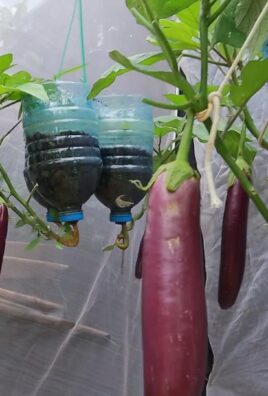
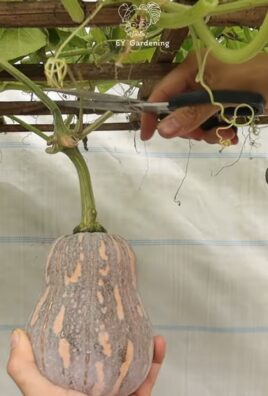
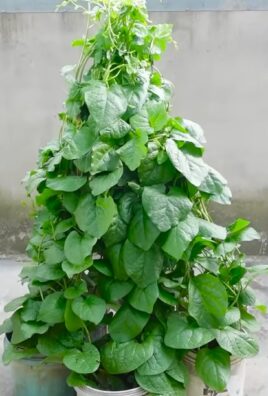
Leave a Comment